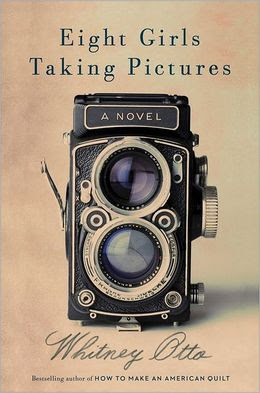Though ostensibly a novel, Eight Girls Taking Pictures by Whitney Otto might be better described as a collection of related short stories, each one dealing with a female photographer living in a different time and place. Starting out in 1917 with a story about Cymbeline Kelley, a pioneering female photographer whose studio has just been burnt down, the stories go on to feature a diverse group of women: a plucky British girl who starts her own photography studio and ultimately uses her art to help her husband, shell-shocked from WWI; an Italian immigrant who, by way of San Francisco, becomes embroiled with the Communist party in 1920's Mexico; a privileged American who becomes model and muse to some of Europe's most prominent Surrealists just before WWII; and a Manhattan housewife who literally uses the world outside her window as her photographic subject matter. In spite of their varied circumstances, each character deals with the common challenges of finding her place in a world dominated by male photographers and struggling to balance her artistic drive with her family obligations.
I liked this book quite a lot, although it's one whose appeal grew on my slowly. The opening story, although crucial to the book and marked by a dramatic case of arson, is perhaps one of the weakest and least memorable. I found the subsequent stories that are more closely tied to world events to be much more engrossing. Any one of those felt like it could have been expanded into a full length novel in its own right. I should also admit that as I made my way through this book, it took some time for me to let go of my preconceived notions about it. I had expected that each story would be very interrelated, with each character having explicit ties to characters who came before her. Although the final two stories in the novel, set in the 1970's and 1980's, do circle back to 1917's Cymbeline Kelley, they are mostly independent of one another. There are a few cameos in which one character is mentioned in another's story, but the overall theme of the novel is not one of underlying connections. Instead, the purpose of the novel almost seems to be a revisiting of the same character--a female photographer--over and over again, showing how she fares during different periods throughout time. In the end, I liked this effect much more than the one I came to the book expecting.

It sounds like a lovely read. I think I'd read something like this especially since it centers on women, plus I love the history portion of it. Have any of the characters stayed with you? I know when I read really good stories I can't stop thinking about the characters for a long time.
ReplyDeleteA few of them have, especially the ones whose stories were set in European art world around WWII.
Delete